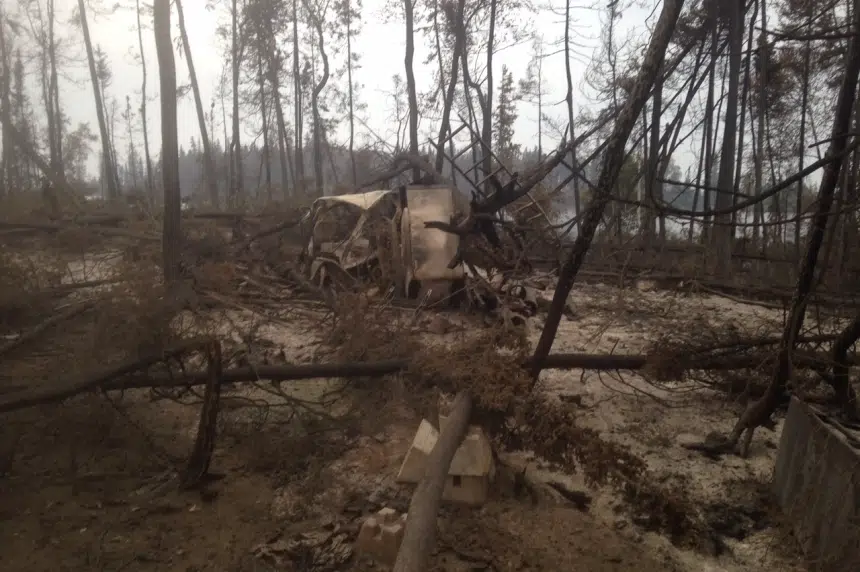Like its neighbouring provinces, Saskatchewan is facing extreme fire conditions due to the high heat and low precipitation.
So far this year, the province has dealt with 202 fires, which is slightly above the five-year average of 195.
Steve Roberts, the vice-president of operations for the Saskatchewan Public Safety Agency, explained two fires — the Briggs and Lock — are not yet contained and are posing a concern.
“The Brigg fire, it started June 29 in the afternoon,” Roberts said Friday. “By 8 p.m. the next day, it had exceeded 1,500 hectares. The fire is adjacent to the Cigar Lake Mining Facility.”
On Thursday, the facility self-evacuated all non-critical staff. Currently the fire is being managed and there has been no report of structure losses due to the fire.
“The site is all cleared,” Roberts said, “There’s actually very little flammable material at the mine site itself and all of their materials are actually stored in a safe manner. All of the material is underground, (so) we do not anticipate exposure risk from that point of view.”
The second fire of concern is the Lock fire, which is located 45 kilometres west of Buffalo Narrows, and over 20 kilometres away from the nearest community. The Lock fire’s current size is 3,380 hectares. So far, no structures have been reported as lost, primarily in commercial timber.
“This fire is exhibiting extreme fire behaviour and significant growth, similar to what we’re seeing all across Western Canada and the U.S.,” Roberts said.
“At this time, Canada is not supporting our agency. We’re doing it with provincial resources. We are not also exporting resources to our neighbouring provinces due to the current fire situation.”
On both fires, air tanker resources have been utilized in different configurations. Some are to protect value and some are to directly attack fires or to protect the staff on the ground.
“Heat affects our aircraft performance (and) our staff,” Roberts said. “We’re very proactive on ensuring our staff to stay hydrated, that even on these volatile fires, they are protected by air resources and they’re not put in situations where they cannot manage the risk. Our model here is that we’re working smarter and safer on these fires.”
Currently there are 17 active fires, five of which are contained with the rest being monitored.
As a result of the wildfires, a provincial fire ban came into effect at noon on Friday for all Crown lands in Saskatchewan.
That includes all provincial parks, and all areas in the Northern Saskatchewan Administration District. It applies to all open fires and all controlled burns, which means if there are burning permits issued, people will be suspended. This also applies to fireworks.
Also Friday, a ban on all wood fires was issued for Prince Albert National Park.
“No open fires are permitted including in camp kitchen shelters,” Parks Canada said in a release. “Only propane or naptha camp stoves are allowed.”
The provincial fire ban will remain in effect until there are improvements in temperature and moisture levels.







